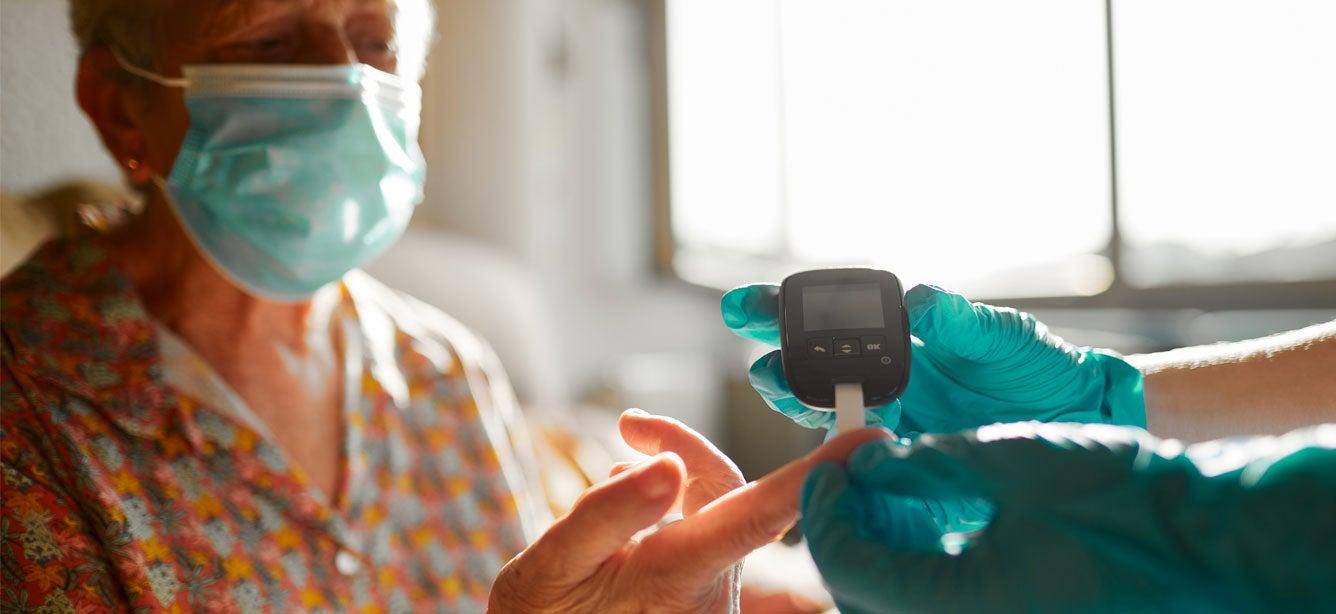
Prescription insulin is used by 8.4 million Americans to control their blood sugar and prevent diabetes complications.1 If you have diabetes and are on Medicare—or if you’ll soon be eligible to enroll—you may be wondering whether Medicare provides insulin coverage.
Below is an overview of the insulin coverage provided by Medicare Part B and Medicare Part D. You must have Part B and Part D to receive the services and supplies they cover.
Is insulin covered by Medicare Part B?
According to Medicare.gov, "Medicare Part B (Medical Insurance) covers insulin if you use an insulin pump that's covered under Part B's durable medical equipment benefit. Part B doesn’t cover insulin pens or insulin-related supplies such as:
- Syringes
- Needles
- Alcohol swabs
- Gauze
Medicare Part D (prescription drug coverage) covers:
- Injectable insulin that isn’t used with a traditional insulin pump
- Insulin used with a disposable insulin pump
- Certain medical supplies used to inject insulin, like syringes, gauze, and alcohol swabs
The cost of a one-month supply of each Part D- and Part B-covered insulin is capped at $35, and you don’t have to pay a deductible for insulin. If you have Part B and Medicare supplement insurance (Medigap) that pays your Part B coinsurance, your plan should cover the $35 (or less) cost for insulin. For insulin-related supplies (like syringes, needles, alcohol swabs and gauze), you'll pay 100% of the cost under Part B (unless you have Part D).
Why is insulin not covered by Medicare Part B?
Insulin is a prescription drug used to control diabetes. Medicare Part B does not routinely cover prescription drugs. To get Medicare drug coverage, you must join a Medicare-approved plan that offers drug coverage. If you do not choose to enroll into a Medicare Part D drug plan—or a Medicare Advantage plan that includes Part D coverage—you can expect to pay 100% of the out-of-pocket cost for insulin administered via injections or inhalation. You also pay 100% for insulin pens, needles, syringes, alcohol swabs, and gauze.
Medicare Part D covers many types of injectable insulins as well as inhaled insulin, along with the supplies needed to use them.
When does Medicare Part B cover insulin?
If you’re medically required to receive insulin via an insulin infusion pump, Medicare Part B covers the cost of the insulin. You pay 20% of the Medicare-approved amount (the amount payable to a doctor or supplier that accepts Medicare) after you meet the Part B deductible.
Medicare Part B also covers other supplies needed by older adults with diabetes. There may be limits on how much or how often you receive these supplies, which include:
- Insulin pumps and pump supplies
- Blood sugar or glucose testing monitors
- Lancets and lancet devices
- Glucose control solutions
It’s important that you only order supplies from a pharmacy or supplier that accepts and bills Medicare. This will help ensure that Medicare covers your purchase and saves you money. With diabetes supplies covered under Medicare Part B, you pay 20% of the Medicare-approved amount after the yearly Part B deductible.
What insulin is covered by Medicare Part D?
Available to all Medicare enrollees, Part D is Medicare’s prescription drug program. You can purchase a drug plan that meets your needs through a private, Medicare-approved insurance carrier. If you have Medicare Advantage (Part C), you may be able to get your drug coverage that way.
Part D covers injectable and inhaled insulin that's not used with an insulin pump. It also covers certain medical supplies used to inject or inhale insulin, like inhaled insulin devices, syringes, gauze, needles, and alcohol swabs. Most Part D plans charge a monthly premium ($46.50 on average in 2025) that’s separate from the Medicare Part B monthly premium you may already be paying ($185 for most people in 2025). You will be responsible for other out-of-pocket costs, too, such as coinsurance or copayments. Many drug plans also have a deductible that you must meet before your plan coverage kicks in.
How can I afford insulin on Medicare?
Worried about affording the insulin you need to manage your diabetes? Below are eight ways to save money:
- Sign up for Diabetes Self-Management Training (DSMT): DSMT is outpatient training designed to help people effectively manage their diabetes. Medicare Part B may pay for up to 10 hours of this program, and you might also qualify for annual follow-up sessions. Your doctor or other qualified healthcare provider must order this training. During DSMT, you'll learn how to monitor your blood sugar and eat healthy. You'll also get tips on taking prescription drugs, which may include ways to save on insulin.
- Talk to your doctor: Ask your health care provider directly about programs or coupons that can help defray the cost of insulin. Also, not all insulin is priced the same. Check with your provider to see if there are less expensive options (e.g., generic versions) and ask if it's ok for you to switch. Your doctor may even have insulin samples on hand that they can give to you immediately.
- See if you qualify for Pharmaceutical Patient Assistance Programs: The U.S. manufacturers of insulin—Novo Nordisk, Eli Lilly, and Sanofi—offer Patient Assistance Programs to help make insulin more affordable. Benefits include free insulin for a specific time period or insulin discounts. These programs are open to Medicare beneficiaries and uninsured people who meet certain income criteria.
- Check out State Pharmaceutical Assistance Programs: Some states help older adults with low income pay for their prescription medications, including insulin. Not all states participate, and eligibility rules may be different from state to state. Visit this website and click on your state to see if it offers a pharmaceutical assistance program.
- See if Walmart's ReliOn™ Insulin is right for you: ReliOn™ is Walmart’s over-the-counter brand of human insulin, which costs about $25 per vial. This is an older form of insulin that should be used along with a strict eating schedule, so talk to your doctor before using it. Walmart also offers a rapid-acting insulin called Novolog that's priced much lower ($73 per vial as of March 2025) than the original name-brand version.
- Take advantage of program matching services: Services such as GetInsulin.org and RxAssist help match you with programs that provide free and low-cost insulin to qualified people. You'll need to provide basic information such as your location, prescription, income, and insurance details.
- Look for savings on coupon sites: GoodRx, SingleCare, and other free sites can help ensure you're getting your insulin at the most affordable cost. You can print out a coupon or use your smartphone to redeem your savings when you pick up your insulin prescription.
- Use's NCOA's BenefitsCheckUp: At BenefitsCheckUp, you can find programs that can help you save money on diabetes medications and other health care costs. Visit BenefitsCheckUp.org and enter your ZIP code to browse benefits, learn more about programs, and get information on how to apply.
Buyer beware: Why you shouldn’t purchase insulin online
If you spot an ad for discount insulin, it can be tempting to stock up. But buying your insulin from unknown online retailers is a gamble. Often, the insulin shows up expired or in damaged packaging (which could signal tampering).
It's much safer to get your insulin from a known and reputable source—even if you have to pay a bit more.
If you can’t afford your insulin, don’t be afraid to ask for help
Being on a tight budget can cause us to cut corners sometimes. However, it’s never a good idea to ration your insulin to save money. Don’t skip doses, take less insulin than you’re prescribed, or delay your refills. This can lead to extremely high blood sugar and a potentially life-threatening diabetes complication called diabetic ketoacidosis.
If you're having trouble affording your insulin, explore the resources above to help you pay for insulin and diabetes medication.
Get help choosing a Medicare Part D drug plan
When choosing a Medicare Part D plan, it's important to select one that provides the most value and savings on all your medications—not just insulin. If you're unsure which plan is best for you, contact your local State Health Insurance Assistance Program (SHIP) office for unbiased guidance from a trained counselor.
Source
1. FDA. FDA Approves First Rapid-Acting Insulin Biosimilar Product for Treatment of Diabetes. February 14, 2025. Found on the internet at https://www.fda.gov/news-events/press-announcements/fda-approves-first-rapid-acting-insulin-biosimilar-product-treatment-diabetes




